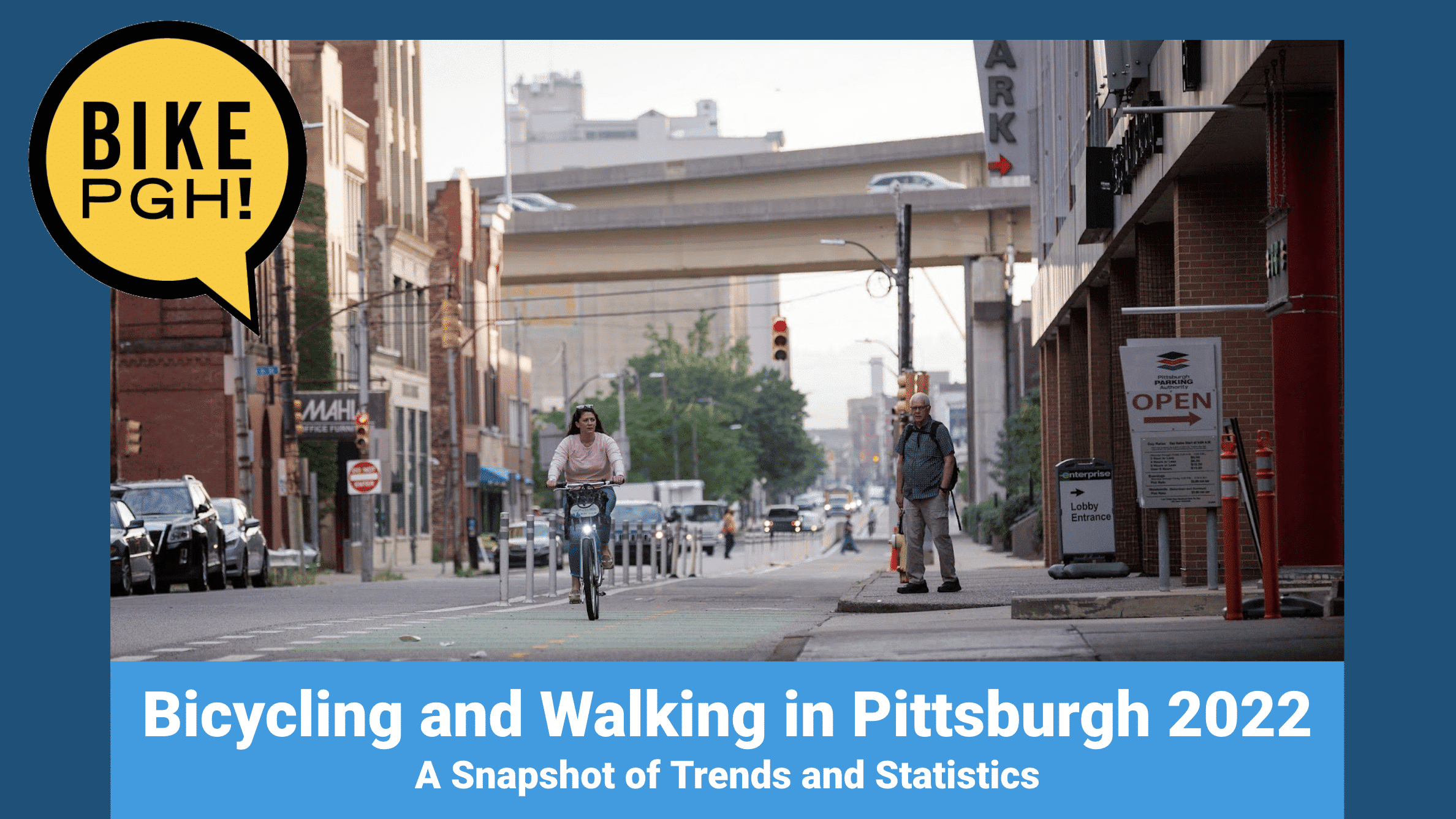
2022 trends offer a look into the progress and shortcomings of getting around on a bike or a sidewalk
Pittsburgh’s streets were laid out well before the motor vehicle became the dominant driver of urban planning. Since the founding of the City, Pittsburghers have traversed the city by foot. Our dense business districts and vast network of sidewalks and city steps are products of this history. As other cities have surrendered their streets to the motor vehicle, we have maintained one of the highest walking commuter rates in the nation.
Pittsburghers who use bicycles have not been so lucky. However over the past couple decades things have changed, starting with the installation of the river trail system in the late 90’s and the first “modern” bike lane in 2007. Since then, the number of Pittsburghers who have taken to cycling has been astounding, especially for a city with hills and less than ideal weather. We’re now nationally recognized with having the second fastest 20-year growth in bike commuters in the United States, and a world class trail network that connects to the nation’s capital. Not bad for a city that was ranked “Worst City in the US to ride a bike” in the mid-90s.

However, not all is rosy and we still have major problems to deal with. Decades of car dominance has made many of our neighborhoods dangerous to get around, namely the lower-income communities who rely the most on walking, transit and biking. Pedestrians account for a third of all traffic fatalities and serious injuries. Our bicycling network is disconnected and disjointed and seems to disappear when you need it the most, excluding residents from the joys of affordable and healthful transportation. But there is hope in such documents like the City’s Complete Streets Policy, Bike (+) Plan and Pedestrian Safety Action Plan.
“Between 2010 and 2020, we’ve lost 200 Pittsburghers to traffic violence. 55 of those were people walking”
This document is a first of its kind in Pittsburgh, compiling notable trends and statistics from a variety of studies and surveys from national and local sources into one place. We hope that with this document, decision-makers, journalists, advocates, and the general public will have a better sense of not only the urgency of improving our bike and pedestrian networks, but also the popularity of the investments that enable Pittsburghers to live without motor vehicle dependency.